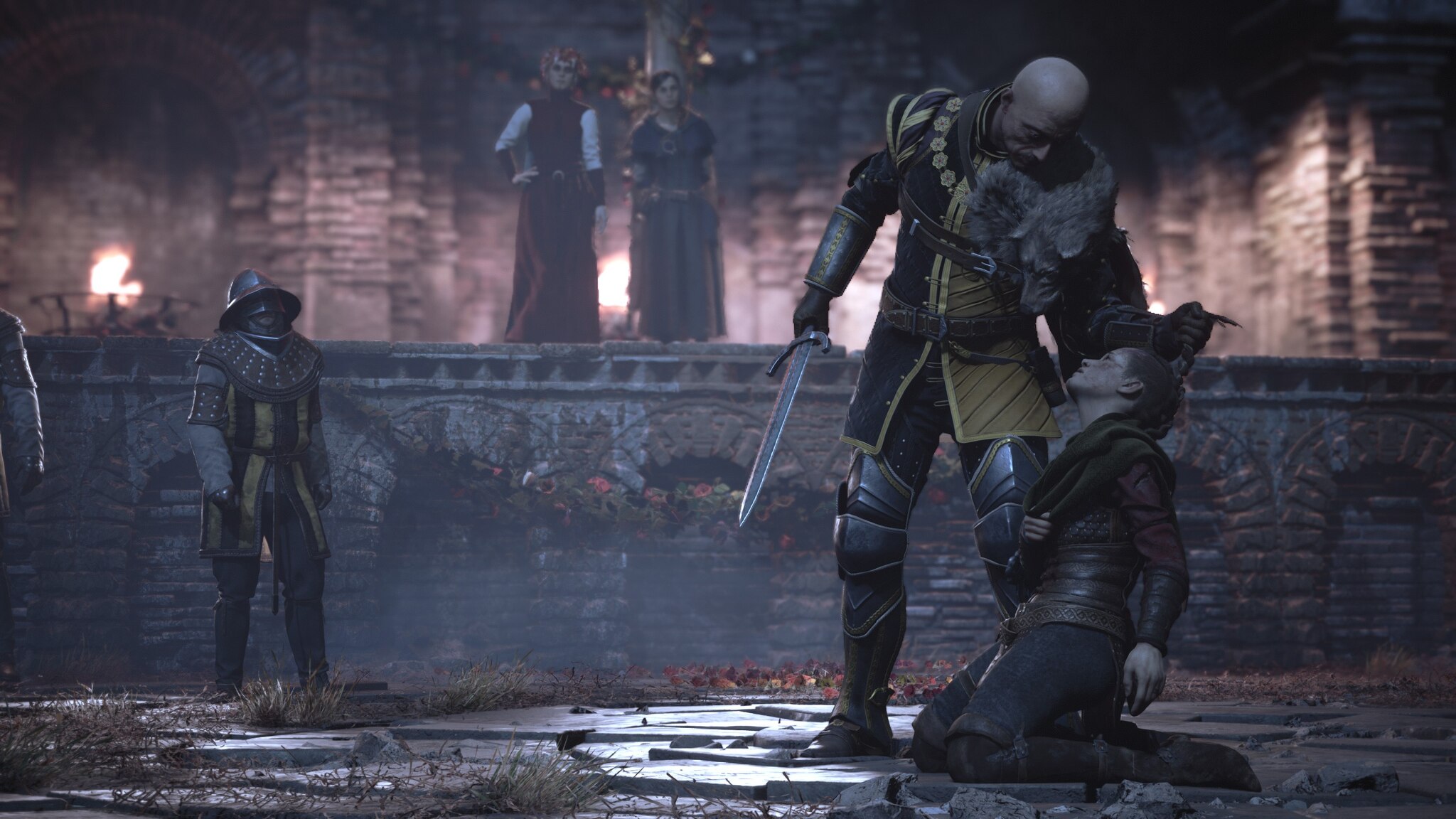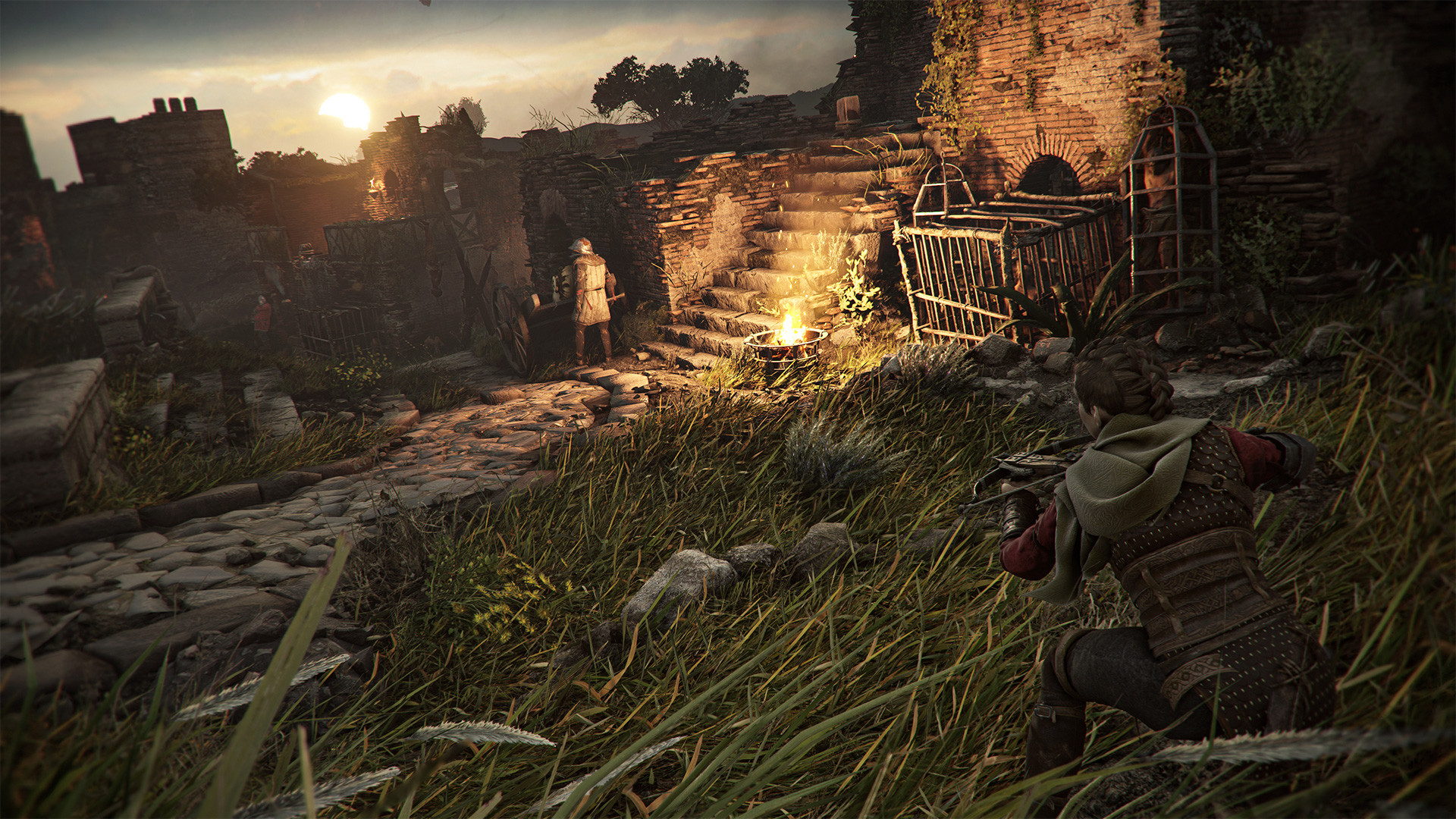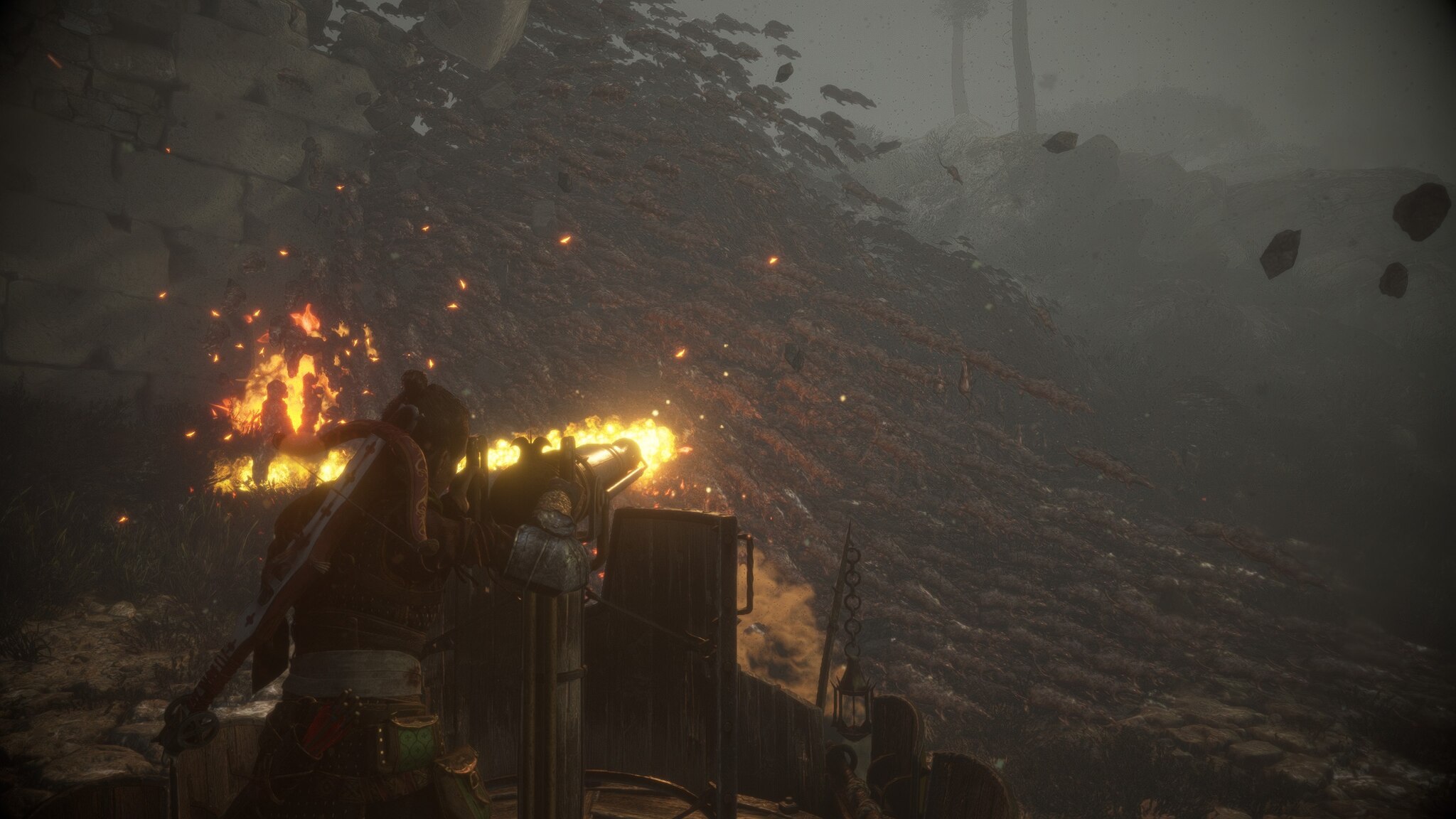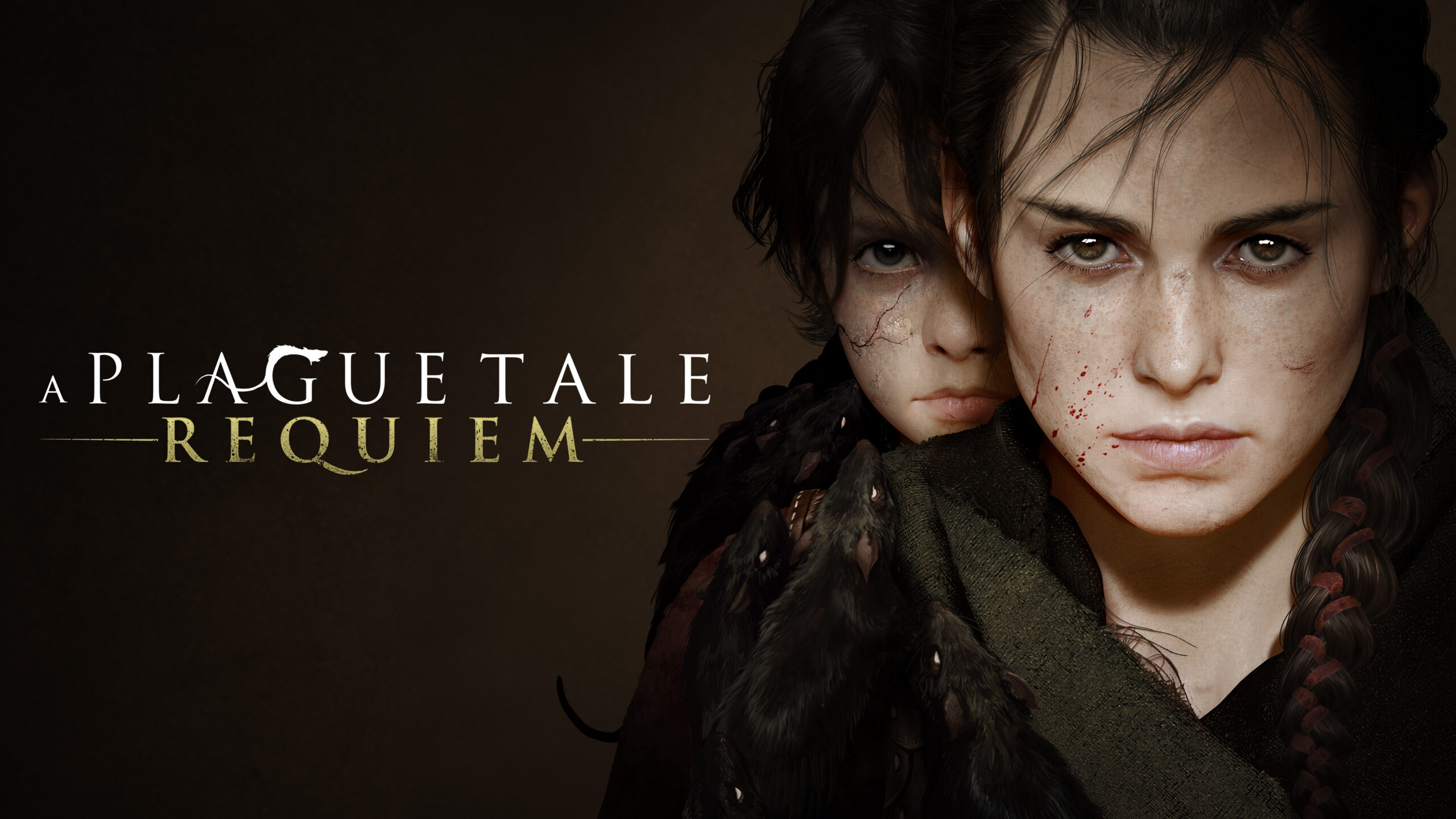In the year of our lord two thousand nineteen, a fever dream erupted from the swampy loins of Asobo Studio; a hallucinatory concoction of medieval dread and rat-infested apocalypse known as A Plague Tale: Innocence. At the epicenter of this macabre odyssey stood Amicia de Rune, a young noblewoman thrust into a world of unimaginable savagery. With her trusty slingshot as her sole companion, she navigated the treacherous landscapes of 14th-century France, a realm ravaged by the Black Death and overrun by ravenous hordes of rats.
Her journey was one of harrowing loss and relentless pursuit, as she sought to protect her brother Hugo, a boy possessed of a terrifying supernatural gift – the ability to command the very rats that plagued France. Amicia’s transformation from a sheltered noblewoman into a hardened warrior was a testament to the indomitable spirit of humanity, even in the face of unspeakable horrors.
A Plague Tale: Innocence was a descent into the abyss of human cruelty and the resilience of the human spirit. It was a tale of survival, of the bonds of family forged in the fires of adversity, and of the transformative power of love in the face of overwhelming despair.
A Plague Tale: Requiem is a sequel that aspires to elevate the stealthy action-adventure experience in every way imaginable. Where does the story take Amicia and Hugo, and how much suffering can they endure? Find out in A Plague Tale: Requiem review!
A Plague Tale: Requiem
Developer: Asobo Studio
Publisher: Focus Entertainment
Platforms: Windows PC, Nintendo Switch (via cloud), Xbox Series X|S, PlayStation 5 (reviewed)
Release Date: October 17, 2022
Price: $49.99 USD

A Plague Tale: Requiem is a gnarled vision of medieval Europe where gritty realism collides with grotesque fantasy. The game’s architecture and villages are so grand and elaborate, they strain the boundaries of 14th century France. Dungeons are festooned with intricate contraptions, while knights lumber about in armor that would crush a man’s bones. It’s a world where the line between reality and madness blurs, where the grotesque becomes the norm.
This is a game that revels in the macabre, from the swarms of ravenous rats that devour everything in their path to the grotesque mutations that plague the land. It’s a game that doesn’t shy away from the darkness, and it’s all the more compelling for it.
A Plague Tale: Requiem tosses historical accuracy out the window in a wild-eyed pursuit of spectacle and adrenaline-pumping gameplay. The game unapologetically trades realism for a world of vile exaggerations, where rats swarm like hurricanes and the line between reality and nightmare blurs into a drunken haze.

As the narrative of Requiem unfolds, Amicia’s disillusionment deepens, her innocence shattered by the horrors she witnesses. Hugo’s macula, the mysterious mark that grants him control over the rats, intensifies, manifesting in increasingly otherworldly forms. The rats themselves, the game’s most terrifying and mesmerizing inhabitants, grow to monstrous proportions.
In A Plague Tale: Requiem, Amicia de Rune is put through the wringer, her spirit battered and her mind teetering on the brink of madness. Like Guts, the tormented protagonist of the anime/manga Berserk, Amicia’s rage and nihilism grow with each passing trial. She’s a warrior forged in the fires of adversity, her innocence stripped away by the relentless cruelty of the world around her.
The actress who portrays Amicia delivers a tour-de-force performance, capturing the character’s emotional turmoil with raw intensity. Her voice drips with desperation and anger, a reflection of Amicia’s descent into despair. Her physicality is equally compelling, her body language conveying a sense of weariness and vulnerability that contrasts with her inner strength.

Requiem takes a jarring misstep by stripping Amicia de Rune of her distinct French accent, a defining feature that anchored the first game’s identity. This abrupt shift to generic British cadences severs the character’s connection to her French lineage and dilutes her overall flavor. This baffling decision is a slap in the face to fans of the first game and a disappointing mistake in an otherwise compelling sequel.
A Plague Tale: Requiem is a rehash of the same old puzzle-stealth adventure formula but with bigger and more impressive set pieces. Amicia must navigate through tightly scripted environments, often accompanied by a partner with gimmicky abilities that add a dash of variety to the proceedings. The game’s main selling point is its grand sense of adventure, with sprawling environments that dwarf those of its predecessor.
These labyrinthine landscapes offer multiple paths to progress, injecting a semblance of choice into the otherwise linear experience. Each stealth sequence is crammed with variables, creating a more diverse gameplay experience than its predecessor. The open-ended stealth playgrounds are the high points where players are given the freedom to experiment with the enemy AI and Amicia’s abilities.
However, this veneer of complexity is quickly shattered by the game’s relentless handholding. Amicia’s actions are constantly dictated by the game’s script, reducing her to a mere puppet in a grand, pre-ordained narrative. The game’s insistence on controlling every aspect of the player’s experience strangles any sense of agency, turning what could have been an exhilarating adventure into a tedious guided tour.

Requiem unleashes a menagerie of enemy types, each with their unique quirks that demand a diverse approach from Amicia. While she’s undoubtedly tougher than she was in Innocence, she’s still a girl raised in the lap of nobility. Don’t expect her to morph into a sword-wielding Joan of Arc, dodging and rolling around armored Frenchmen like in Dark Souls.
Amicia relies on stealth and cunning, employing single-use shives for silent takedowns, like Ellie from The Last of Us. Her sling serves as a non-lethal weapon, used to choke out unsuspecting guards. Despite her newfound resilience, she remains fragile, capable of taking only one hit before succumbing to her wounds. Her regeneration factor is deliberately sluggish, a constant reminder of her vulnerability since she can only take two hits at most.
Amicia’s mechanics are less like Solid Snake and are more like a Kevin McCallister-style tactical approach to combat. Engaging with the enemy is a chess match of strategy and resourcefulness, where every move could mean the difference between life and death.

The absence of last-gen versions is likely a consequence of the game’s rat-fueled mayhem, as these aging consoles simply couldn’t handle the sheer processing power required to render such a grotesque spectacle. The massive hordes of rats are a swarming, writhing ocean of teeth and claws, a nightmare of nature unleashed upon the land. Their movements are a living tide that crashes and surges through the game’s environments.
Some of the most thrilling moments in Requiem are the puzzle sequences where Amicia must navigate her way through these ravenous hordes. The rats, driven by an insatiable hunger and a fear of light, become an obstacle course, forcing Amicia to use her wits and ingenuity to find safe passage. She must utilize braziers, torches, and makeshift tools to create paths through the rat-infested areas, each step a heart-pounding test of survival.
The tension escalates even further when Amicia encounters both rats and guards simultaneously. These scenarios are where Requiem truly shines, creating moments of intense suspense and unforgettable encounters. The rats become a strategic element, as Amicia must use their fear of light to lure them away from the guards, creating opportunities for stealth takedowns.
However, despite the impressive visuals and intense gameplay, the kinesthetics of A Plague Tale: Requiem doesn’t quite feel like a PlayStation 5 game. Amicia’s movements often feel scripted and unnatural, and the game’s reliance on pre-baked contextual actions limits the player’s freedom and creativity. The lack of polish in this area is a disappointing blemish on an otherwise exhilarating experience.

A Plague Tale: Requiem is a game of brilliant ideas hamstrung by sloppy execution. Amicia’s actions are as rigid as a corpse in a morgue, her movements scripted and unnatural, often defying logic and reason. She’s like a puppet on a string, her every move dictated by the game’s overzealous programmers.
The game is also guilty of the played-out cliche of forced walking sequences where Amicia is reduced to a snail’s pace, her hand firmly grasped by her partner, as if they’re two preschoolers embarking on a field trip. The illusion of freedom and control is shattered, replaced by a feeling of being trapped in a digital marionette show.
Even the most basic actions, like sprinting or climbing over small obstacles, are beyond Amicia’s limited repertoire. She’s a damsel in distress, even when she’s armed to the teeth with slingshots and stealth skills. These arbitrary restrictions, seemingly designed to frustrate rather than challenge, constantly break the player’s immersion, shattering the illusion of a realistic and believable world.
The game’s contextual actions, while visually impressive, feel artificial and contrived. Amicia’s movements snap into unnatural positions to accommodate the mo-capped animations. It’s like watching a bad ballet, where the dancers are more concerned with executing their moves flawlessly than actually conveying emotion or believability.

Music maestro Olivier Deriviere orchestrates a haunting melody that perfectly harmonizes with the game’s macabre narrative. His score, a pulsating heartbeat of “psycho strings” and melancholic undertones, mirrors Amicia’s fractured psyche, her sanity teetering on the brink as she navigates a world infested by rats and human savagery.
Deriviere’s compositions expertly heighten the tension in scripted scenes, his music swelling and rising in sync with the escalating drama. The player is effortlessly drawn into Amicia’s tormented mind, her every fear and anxiety echoed through the haunting melodies. It’s a masterclass in musical storytelling, where sound and narrative intertwine to create an unforgettable experience.
Deriviere’s score is an active participant in the game’s world, a living entity that reacts to Amicia’s journey and the horrors she encounters. The music is a constant companion, a haunting reminder of the darkness that lurks around every corner, a chilling premonition of the dangers that lie ahead.

A Plague Tale: Requiem is a grueling endurance test, a gut-wrenching odyssey through a world of unremitting darkness, where hope is a mirage shimmering in the desert of despair. Players will be dragged through the muck and mire of this bleak narrative, their souls battered and bruised by the relentless onslaught of horrors that await them.
This is a game that doesn’t skimp on content. It’s a marathon of misery, a never-ending cycle of survival that will test your every ounce of sanity. For those who dare to brave its unforgiving depths, there are rewards to be found – a story that will linger in your mind long after the credits roll, visuals that will leave you in awe, and a nifty new game plus mode to make the nightmare more fun on replays.
The gameplay, while technically an improvement over its predecessor, remains rooted in the same rigid stealth mechanics that felt outdated even in the last generation. Amicia’s movements are as stiff as a corpse, her actions dictated by a script that allows no room for improvisation or player agency. The game’s overreliance on pre-baked contextual actions further reinforces this feeling of artificiality, turning Amicia into an automaton rather than a flesh-and-blood character.

Despite its flaws, A Plague Tale: Requiem is a game that demands your attention, a visceral experience that will leave you shaken and disturbed. It’s a game that doesn’t shy away from the darkness, that dares to confront the ugly underbelly of humanity.
It’s a game that will stay with you long after you’ve put down the controller, a haunting reminder of the fragility of life and the encroaching darkness that lurks just beyond the edge of our perception.
A Plague Tale: Requiem was reviewed on PlayStation 5 using a copy purchased by Nichegamer. You can find additional information about Niche Gamer’s review/ethics policy here. A Plague Tale: Requiem is now available for Windows PC (via Steam), Nintendo Switch, Xbox Series X|S, and PlayStation 5.
